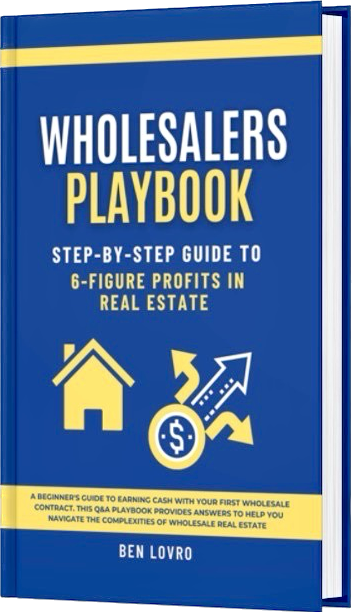FREE WHOLESALING COURSE
Get The Exact Blueprint To Launch And Grow A Successful Real Estate Wholesaling Business


How Do Wholesaling And Traditional Real Estate Transactions Differ?
Introduction
The world of real estate offers a spectrum of strategies for trading properties, each carrying unique procedural elements, risk levels, and profit margins. Among these, wholesaling and traditional real estate transactions stand out to their distinct approaches. Understanding the differences between them is pivotal for both investors and professionals in the industry.

Understanding Traditional Real Estate Transactions
In a traditional real estate transaction, the process typically unfolds through a series of well-established steps. These steps are designed to ensure a smooth and efficient transfer of property ownership from the seller to the buyer.
The first step in a traditional real estate transaction is usually the initial contact between the buyer and the seller. This can happen through various means, such as a phone call, email, or in-person meeting. During this initial contact, the buyer expresses their interest in purchasing the property, and the seller provides information about the property, including its price, condition, and any other relevant details.
Once the buyer and seller have established initial contact, the next step is often the negotiation of the terms of the sale. This includes discussing the purchase price, any contingencies or conditions that need to be met, and any other specific terms that both parties need to agree upon. Negotiations can involve multiple rounds of back-and-forth communication until both parties reach a mutually acceptable agreement.
After the terms of the sale have been agreed upon, the next step is typically the execution of a purchase agreement or contract. This legally binding document outlines the agreed-upon terms and conditions of the sale, including the purchase price, closing date, and any contingencies or conditions that need to be met before the sale can be finalized. Both the buyer and seller must sign the purchase agreement to make it official.
Once the purchase agreement is signed, the buyer usually has a specified period of time to conduct due diligence on the property. This may involve hiring professionals, such as home inspectors or appraisers, to assess the condition and value of the property. The buyer may also need to secure financing during this time, if they are not paying in cash. If any issues or concerns arise during the due diligence period, the buyer may have the option to renegotiate the terms of the sale or even back out of the transaction.
Assuming the due diligence period goes smoothly, the next step is the closing process. This involves the transfer of funds from the buyer to the seller, the signing of all necessary legal documents, and the recording of the deed with the appropriate government agency. The closing is typically conducted with the assistance of a title company or attorney who ensures that all necessary paperwork is completed correctly and that the transaction is legally binding.
Finally, after the closing is complete, the property ownership is officially transferred from the seller to the buyer. The buyer receives the keys to the property and takes possession, while the seller receives the proceeds from the sale. At this point, the traditional real estate transaction
Property Listing: Sellers list their property on the market, often with the help of a real estate agent. The property is then advertised across various platforms to attract potential buyers.
Offer and Negotiation: Interested buyers submit offers, often through their real estate agents. Negotiations occur regarding the price and terms of the sale.
Inspection and Appraisal: Once an offer is accepted, the property undergoes a professional inspection. The buyer's mortgage lender also requires an appraisal to determine the property's value.
Financing: Buyers often secure a mortgage to finance the purchase. The lender's approval is based on the property's appraised value and the buyer's creditworthiness.
Closing: All parties meet to sign the necessary paperwork, the transaction is funded, the title is transferred, and the property officially changes hands.
This conventional process involves several parties, including real estate agents, buyers, sellers, lenders, inspectors, appraisers, and title companies. Each transaction can span weeks or even months from listing to closing.
Dissecting Real Estate Wholesaling
Real estate wholesaling is a unique and unconventional process that involves a shorter timeline compared to traditional real estate transactions. It is a strategy used by investors to quickly sell properties without actually owning them.
The first step in real estate wholesaling is finding potential properties that have the potential for a good deal. Wholesalers typically look for distressed properties, such as those in foreclosure or in need of significant repairs. They may also seek out motivated sellers who are willing to sell their properties at a discounted price.
Once a potential property is identified, the wholesaler negotiates a purchase agreement with the seller. This agreement allows the wholesaler to market and sell the property to potential buyers without actually taking ownership of it. The purchase agreement typically includes an "assignment clause," which allows the wholesaler to assign the contract to another buyer.
The next step in the process is marketing the property to potential buyers. Wholesalers often use various marketing strategies, such as online listings, direct mail campaigns, or networking with other real estate professionals. The goal is to find a buyer who is willing to purchase the property at a higher price than the wholesaler's purchase agreement with the seller.
Once a buyer is found, the wholesaler assigns the purchase agreement to the buyer. This means that the buyer takes over the contract and becomes responsible for closing the deal with the seller. In exchange for assigning the contract, the wholesaler typically receives an assignment fee, which is a percentage of the final sale price.
The final step in real estate wholesaling is the closing process. The buyer and seller complete the necessary paperwork and finalize the sale. The wholesaler is not involved in this process and does not attend the closing.
Overall, real estate wholesaling is a fast-paced and unconventional strategy that allows investors to profit from real estate transactions without actually owning the properties. It requires a keen eye for finding good deals, strong negotiation skills, and effective marketing strategies to attract potential buyers. While it may not be as well-known or widely practiced as traditional real estate investing, wholesaling can be a lucrative venture for those who are willing to put in the effort and learn the ins and outs of the process.
Property Sourcing: Wholesalers seek out properties below market value. These are often distressed properties or sellers needing to sell quickly.
Contract Assignment: Wholesalers secure a contract with the seller, giving them the right to purchase the property. Instead of buying it, they sell the contract to an end buyer at a higher price.
No Financing or Funding: Wholesalers generally don't need large sums of money or financing since they're not purchasing the property outright—just the contract.
Quick Turnaround: The wholesaler's goal is a swift process, often looking to close within days or weeks.
Wholesaling is a strategic business model focusing on fast, short-term profits.
Key Differences Between Wholesaling and Traditional Transactions
Roles and Participants
In traditional transactions, real estate agents represent buyers and sellers, facilitating the process. Wholesalers, however, represent their business interests, acting as intermediaries between property sellers and end buyers (usually investors).
Property Ownership
In traditional sales, buyers intend to own the property, residing there, renting it out, or renovating it for resale. Wholesalers never take ownership; they sell the purchasing rights to another buyer before the sale is complete.
Financing
Traditional buyers often require mortgages, leading to credit checks, appraisals, and down payments. Wholesalers need little capital—just enough to secure contracts, not to purchase properties.
Timeframes
Traditional sales can take a considerable time to inspections, negotiations, and mortgage approvals. Wholesalers aim for a quick turnaround, avoiding such delays.
Profit Strategy
Real estate agents earn commission based on the property's sale price. Wholesalers make money from the contract fee—the difference between the price they contract with the seller and the fee they charge the investor.
Risk Profiles: Wholesaling vs. Traditional Real Estate
Wholesaling carries a different risk profile compared to traditional transactions. While wholesalers can enter deals with minimal financial commitment, they risk losing potential assignment fees if they fail to find an end buyer. Conversely, traditional buyers risk more significant financial loss, given the larger upfront investment, but have the potential for longer-term gains through property appreciation or rental income.
Legal and Ethical Considerations
Wholesaling, particularly the aspect of contract assignment, has unique legal considerations. Some jurisdictions have strict regulations regarding contract assignments, necessitating transparent disclosure. Ethical business practices are paramount to maintain a positive reputation and ensure fairness to all parties involved.
Market Knowledge and Skills
Both methods require extensive market knowledge, but the necessary skills differ. Traditional real estate agents need skills in marketing properties, providing customer service, and navigating complex transactions. Wholesalers need expertise in identifying undervalued properties, negotiating deals, and networking with investors.
The Impact of Market Conditions
Market conditions affect both strategies. In a seller's market, wholesalers may struggle to find below-market deals, while traditional buyers face high competition and prices. In a buyer's market, wholesalers may find more opportunities, but traditional sales may take longer with lower profit margins.
Technological Integration in Transactions
Technology plays a crucial role in modern real estate. While traditional transactions have embraced online listings, virtual tours, and digital document signing, wholesaling has also benefited from tech. Investment apps, digital marketplaces for wholesaling, and enhanced communication platforms have streamlined the wholesaling process.
In Conclusion: Tailoring Your Real Estate Strategy
Real estate wholesaling and traditional transactions offer different pathways within the real estate market. Wholesaling appeals to those seeking quick deals with minimal capital, while traditional transactions cater to individuals looking for property ownership or long-term investments. Each requires a distinct skill set, capital, and risk tolerance.
The best approach depends on one's financial situation, business acumen, and real estate goals. By comprehending these differences, professionals and investors can make informed decisions tailored to their objectives, resources, and the market landscape they operate within.

Search Blog
Year
Month



